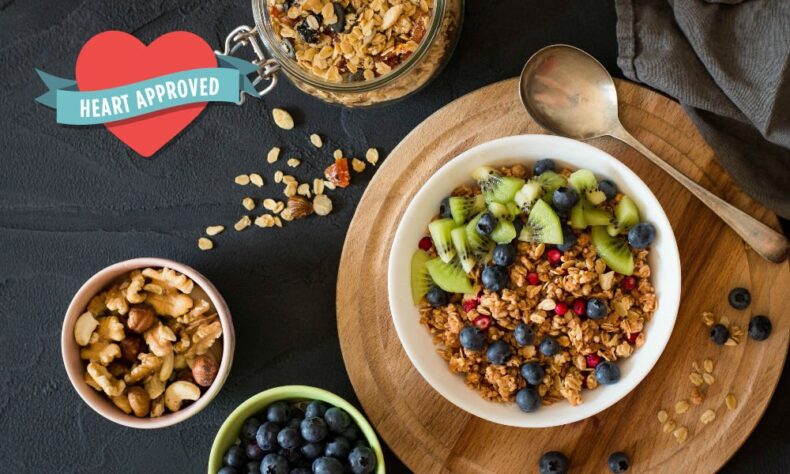As a dietitian and mom of three, my hope for the new year is to…
Becasue its heart month, we got in touch with registered dietitian Suzie Cromwell to get her professional insight on which lifestyle factors make us more susceptible to heart disease, and what steps we can take to prevent our risk–hint: they’re manageable! Read on to find out what Suzie prescribes when thinking about how to love your heart!
Why is heart month such a big deal?
Heart month is dedicated to raising awareness about heart disease and increasing knowledge of the risk factors associated with heart disease with the intention to motivate and encourage a healthier lifestyle.
What are the risk factors associated with heart disease?
The biggest risk factors for heart disease include an unhealthy diet, physical inactivity, unhealthy weight, smoking, stress, excessive alcohol consumption, high blood pressure, and diabetes. According to the Heart and Stroke foundation 9 of 10 Canadians have at least one risk factor for heart disease. Fortunately these are all risk factors that can be controlled, treated, or modified through creating healthy lifestyle changes.
What does a heart healthy diet look like?
There are several diet recommendations from various national and international organizations, but the main unifying message aligns with encouraging a diet filled with whole, minimally processed foods in appropriate portions with less focus on isolating individual nutrients, and more on maintaining an overall healthy dietary pattern.
The Heart and Stroke Foundation makes the following recommendations:
- Consume a variety of natural/whole and minimally processed foods at every meal.
- Eat more vegetables and fruit. Fill your plate with vegetables and fruit at every meal. Buy fresh or frozen unsweetened fruit, or fruit canned in water without added/free sugars or artificial/non-caloric sweeteners. Buy fresh or frozen vegetables without added sauce or canned vegetables with no added salt.
- Choose whole grains.
- Include a variety of proteins from various sources. These protein sources can include beans, lentils, legumes, nuts, lower fat dairy or dairy alternatives (without added/free sugars or artificial/non-caloric sweeteners), lean meats, poultry and fish.
- Eat fewer highly processed foods which include highly refined foods, confectioneries, sugary drinks, processed meats, and snack foods.
- Plan healthy snacks. Include foods from at least 2 food groups with 1-2 servings of vegetables or fruit at every snack.
- Drink water to satisfy thirst. Avoid consumption of sugary drinks including soft drinks, sports drinks, fruit drinks, 100% fruit juices, and ready to drink sweetened coffees and teas.
- Learn what a recommended serving size looks like and choose healthy portions for meals and snacks.
You can also reduce risk by preparing meals at home using natural/whole and minimally processed foods.
- Buy foods in shops and markets that offer a variety of natural/whole and minimally processed foods. Avoids those that sell mainly highly processed products, especially when there is no nutrition information for making healthy food choices.
- Reduce the amount of sugar, salt and solid fats used during preparation of food and in recipes.
- If eating out, choose restaurants that serve freshly made dishes using natural/whole and minimally processed foods and that provide nutrition information to make a healthy choice.
In general, a heart healthy diet combined with physical activity and smoking cessation can help lower your risk of heart disease by combating inflammation, helping to control blood pressure and blood sugar level, and maintaining a healthy weight.
If you have any more questions you’d like us to have answered by Suzie, feel free to leave a question in the comments, or send me an email. Happy heart month everyone!
| SHOP HEART HEALTHY PRODUCTS NOW |



